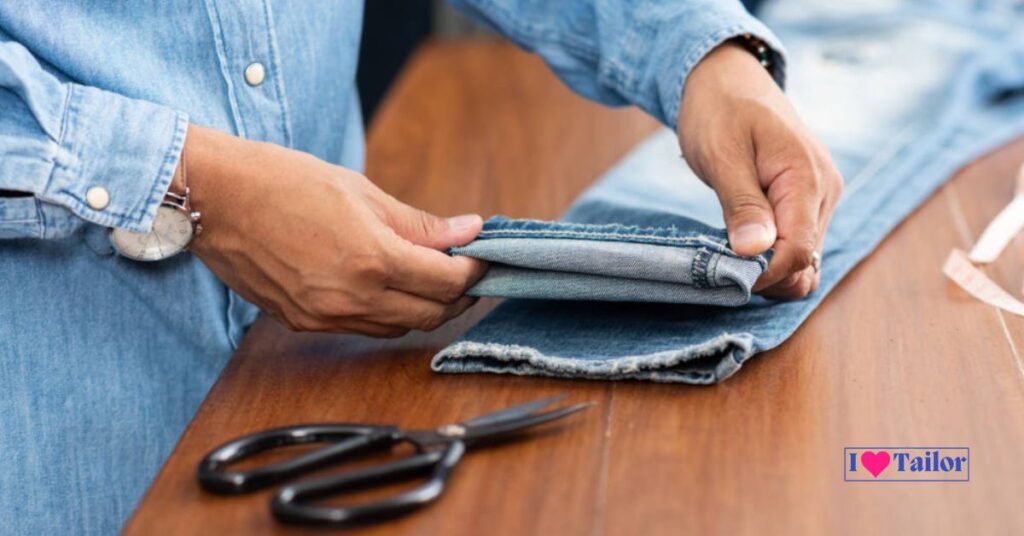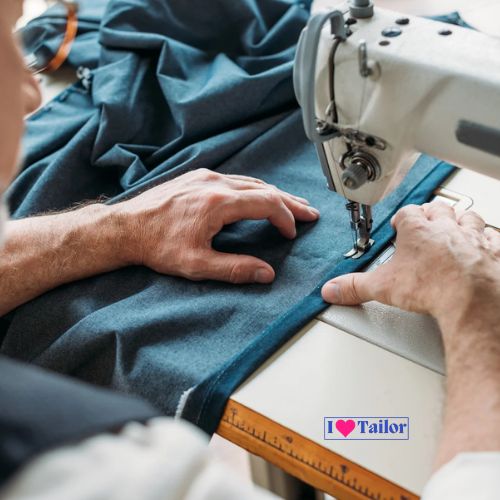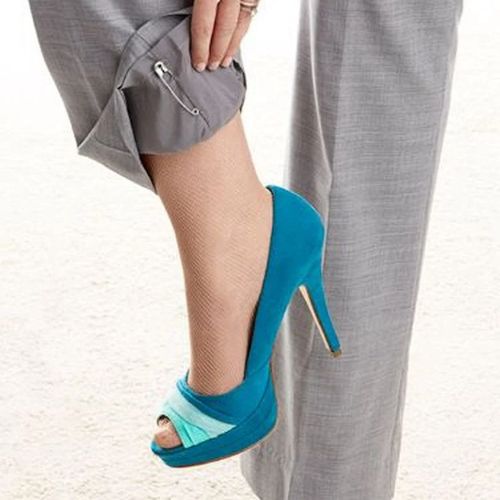How to fix pants that are too long?
We’ve all been there—excitedly buying a pair of pants only to discover that the length isn’t quite right. But worry not; for those who have considered the question “how to fix pants that are too long,” we’ve got the answers. Altering the length of your trousers can be done in various ways, each tailored to different skill levels and the kind of finish you want. In this article, we delve deep into the methods to help you adjust those lengthy pants for a perfect fit.
Also, read about how to tighten pants without a belt.
The Importance of fixing pants that are too long
When pants fit just right, they become an important part of our clothes, making us feel good about ourselves and keeping us comfortable. Let’s quickly see two big reasons why getting the right fit is so important.
Boosting Confidence
- Projection of Professionalism: Well-fitted pants streamline our appearance, showcasing our attention to detail and commitment to presenting ourselves in the best light.
- Enhanced Silhouette: A perfect fit accentuates the body’s natural contours, ensuring we both look and feel our best, elevating our self-esteem.
Ensuring Comfort
- Freedom of Movement: The right fit means neither too tight nor too loose, ensuring ease of movement without any restriction, which is essential for daily activities.
- Reduced Wear and Tear: Properly fitted pants experience less strain, ensuring they last longer, giving us more value for our investment.
5 Best ways to fix pants that are too long
1). Hemming by Hand

What You Need: A needle, thread, scissors, pins, and an iron.
Procedure:
- Wear the pants and fold the extra length inside until it’s at your desired length. Mark the fold using pins.
- Remove the pants and iron the fold to set a crease.
- With your needle and thread, sew around the pant leg, keeping the stitches close to the folded edge.
- Remove the pins and trim any excess fabric, leaving about half an inch from the stitches.
- Iron again for a neat finish.
2). Using Hemming tape

What You Need: Hemming tape (available at craft stores), iron, and scissors.
Procedure
- Turn the pants inside out and fold them to the desired length.
- Place the hemming tape in the fold.
- Iron over the fold, pressing down firmly. The heat will activate the tape, sticking the fabric together.
- Let it cool, and you have a new hem in place.
3). The Roll-Up Technique

What You Need: Pants that are too long; your hands
Procedure:
- Stand upright and wear the pants.
- Grasp the excess length of the pant leg from the outer seam.
- Fold the fabric upwards, creating a cuff to your desired length.
- For a cleaner look, fold the cuff inward, hiding the raw edge.
- Adjust evenly around the circumference to ensure the roll sits flat against your leg.
- Repeat the process with the other leg, ensuring both legs are even in length.
- Wear with confidence, knowing you’ve stylishly adjusted your pants’ length using the roll-up technique.
4). Using a Sewing Machine

What You Need: A sewing machine, pins, scissors, thread, and an iron to fix pants that are too long.
Procedure:
- Wear the pants and fold the extra length inside or outside, marking the new hem with pins.
- Iron the fold for a crisp line.
- Use the sewing machine to stitch around, removing pins as you go.
- Cut off the excess fabric, leaving about half an inch.
- Iron once more for a clean look.
5). Using safety pins or clips

What You Need: Safety pins (or small clips), measuring tape, and a mirror.
Procedure:
- Wear the pants and stand in front of a mirror to determine the desired length.
- Fold the bottom of the pants to the desired length, ensuring an even fold.
- Turn the pants inside out.
- Starting from the inner seam, secure the fold with safety pins, spacing them evenly. If using clips, ensure they grip the fabric securely without causing puckering.
- Turn the pants right side out and check the length in the mirror, adjusting if necessary.
- Ensure the safety pins or clips are well secured to prevent them from coming undone.
Tips for a Neat Finish
When fix pants that are too long, you want them to look tidy and well done. Here are some simple tips for a neat finish:
- Measure Twice: Always double-check your measurements before cutting or folding.
- Use sharp scissors. This helps you get clean cuts without fraying.
- Iron the Hem: Pressing the new hem with an iron makes it look polished.
- Use Matching Thread: If you’re sewing, pick a thread that matches the pants’ color.
- Test the Length: Wear the pants with shoes you’d typically pair with them to check the new length.
FAQs
How do I measure the right length for my pants?
Wear the pants with the shoes you’d typically wear with them. Stand straight and mark where you’d like the hem to end, ideally just above the heel.
Can I adjust my pants without sewing?
Yes! You can use hemming tape, which is an adhesive that bonds fabric together when heated with an iron.
How often should I check the length of my pants after adjusting?
It’s a good idea to check after the first wash to ensure the adjustments have held up. If sewn, the stitches should remain intact, and if using hemming tape, ensure it’s still bonded well.
Can a tailor adjust pants that are too wide and too long?
Absolutely. A skilled tailor can adjust both the width and length of pants to give them a custom fit tailored to your body.
Conclusion
There’s no need to worry or toss away pants that are too lengthy. With the right tools and techniques, you can achieve a professional-looking hem from the comfort of your home. So the next time someone asks you how to fix pants that are too long, share these tried-and-true methods with them. Whether you’re a novice or a sewing enthusiast, there’s a method that’ll suit your skills and needs.
Thanks!







